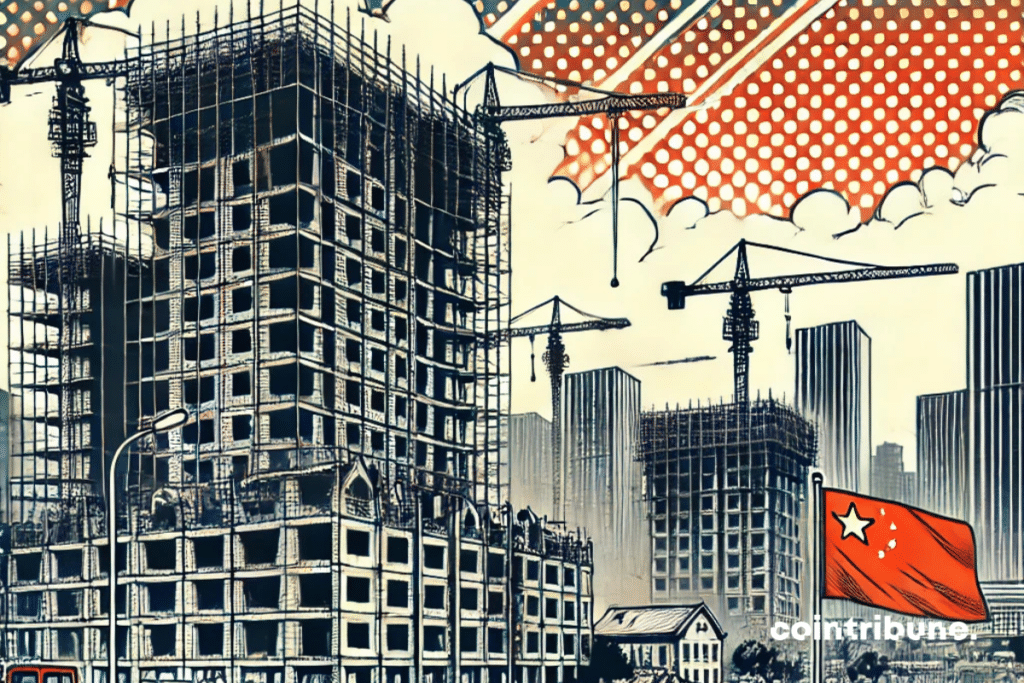18:05 ▪
5
min reading ▪ acc
In a global context marked by economic uncertainty, China faces unprecedented challenges to sustain its growth. For several months, the Asian giant, the world’s second largest economy, has been trying to break the deadlock, mainly by reviving the real estate sector in deep crisis. The Chinese government has just announced a new series of ambitious measures to stimulate its economy, with a particular focus on the property market. These initiatives are crucial for China, but also for the global economy, given the influence of the Middle Kingdom on trade and financial stability.

The recovery focused on the real estate sector
China has unveiled new measures to support its faltering property sector in hopes of boosting its faltering economy. During a press conference in Beijing, Housing Minister Ni Hong announced the expansion of credit for white-listed real estate projects to 4 trillion yuan by the end of 2024, nearly double the previous envelope. This “white list” mechanism allows municipalities to recommend priority real estate projects to banks for financing. The aim of these initiatives is to prevent projects from remaining unfinished, a recurring problem since the crisis of sector giants such as Evergrande.
In addition to this massive funding, Beijing has promised to renovate a million dilapidated houses in the city’s villages. The government believes that these renovations are necessary to improve living conditions and strengthen infrastructure security. In fact, “urban villages present many security risks and poor living conditions. People are eager for renovation,” Ni Hong said during the announcement. Support for the real estate market, one of the pillars of China’s growth for two decades, is now necessary to halt the downward spiral in prices and restore investor confidence.
The measures are welcome, but skepticism remains
If government announcements have already led to renewed interest in financial markets, notably a 20% rise in Chinese stock markets at the end of September, the new measures introduced this week have not generated the same enthusiasm. “The further we got into the press conference, the more we saw that the markets weren’t really excited,” said Stephen Innes of SPI Asset Management. So it seems that investors are waiting for more than just the announcement to be convinced that China’s real estate sector can stabilize in the long term.
“The mess that reigns in the real estate sector in China cannot be solved with a few speeches and uncertain measures,” added Innes, reflecting some caution about the actual effectiveness of these new initiatives.
In addition to targeted housing interventions, the Chinese government has also unveiled a global economic recovery plan that includes lowering interest rates on real estate loans and easing property purchases in major metropolitan areas. However, these measures, while positive, must be measured against the extent of the structural difficulties facing the real estate sector. Investors stress that the situation remains fragile and that the impact of these measures could prove limited if consumer confidence does not return quickly. Beijing, which aims to grow by 5% by 2024, faces many challenges to achieve this goal.
If the new measures demonstrate the Chinese authorities’ desire to revive their economy, they also underscore the complexity of the situation. The real estate crisis remains a major obstacle to achieving the growth targets set by Beijing, and markets seem unconvinced by current solutions. Therefore, it will be necessary to closely monitor the development of China’s growth figures, which should indicate the effectiveness of the ongoing reforms.
Maximize your Cointribune experience with our “Read and Earn” program! Earn points for every article you read and get access to exclusive rewards. Register now and start reaping the benefits.
A graduate of Sciences Po Toulouse and holder of the blockchain consultant certification issued by Alyra, I joined the Cointribune adventure in 2019. Convinced of the potential of blockchain to transform many sectors of the economy, I made a commitment to raise awareness and inform the general public about this ever-evolving ecosystem. My goal is to enable everyone to better understand blockchain and take advantage of the opportunities it offers. I strive every day to provide an objective analysis of current events, decipher market trends, convey the latest technological innovations, and put into perspective the economic and social issues of this ongoing revolution.
DISCLAIMER OF LIABILITY
The comments and opinions expressed in this article are solely those of the author and should not be considered investment advice. Before making any investment decision, do your own research.

